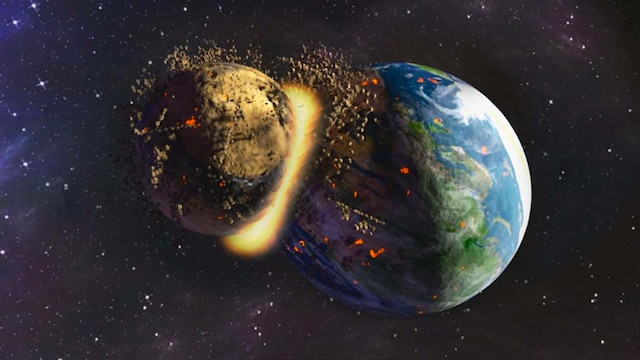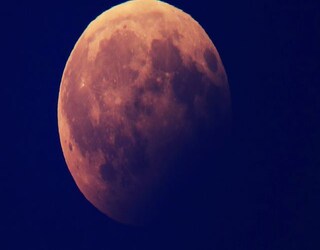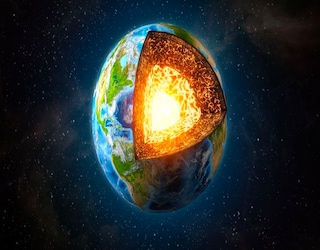
A Chinese research team studied massive masses of material buried beneath the African continent and the Pacific Ocean and found that Theia, the planet that crashed into Earth billions of years ago, and created the Moon, may be stuck inside Earth
In a potentially groundbreaking discovery, scientists from the China Academy of Sciences have presented new evidence supporting the theory that a significant portion of Theia, a Mars-sized protoplanet, may have become deeply embedded within Earth during a cataclysmic collision 4.5 billion years ago. This collision is believed to have led to the formation of the Moon, but not all researchers have been in agreement with this hypothesis until now.
The research team examined large low-velocity provinces (LLVPs), massive masses of material buried beneath the African continent and the Pacific Ocean. Their findings, detailed in a recent paper published in the journal Nature, involved intricate fluid dynamics simulations to understand the possible origin of these enigmatic blobs.
By simulating the impact of a Theia-like object colliding with Earth, the researchers concluded that the upper part of Earth’s mantle would have been melted during the event, allowing around ten per cent of the object to sink deep into Earth, near its core. Over time, these embedded remnants of Theia would have been influenced by convection currents, evolving into the two LLVPs.
Related Articles
Previous simulations had suggested that only trace amounts of Theia became integrated into Earth. However, the new study proposes that a more substantial portion of the Mars-sized protoplanet, approximately ten per cent, may have been trapped within our planet, accounting for roughly two to three per cent of Earth’s total mass.
This revelation also provides a potential means of testing the theory. “In most of the Moon-forming impact simulations, most of the lunar materials come from the impactor, so we expect future missions can get lunar mantle rocks and compare that with the mantle blobs to see if they share the same chemical signatures,” explained lead author Qian Yuan, a geophysicist at Caltech. “If the lunar mantle rock and LLVP-related basalts share the same chemical signatures, they should both originate from Theia.”
While these findings are captivating, numerous questions remain, and not all experts are in full agreement with the conclusions regarding the LLVPs’ origins. Dr. Robin Canup, a planetary scientist at the Southwest Research Institute in Boulder, Colorado, not involved in the study, praised the findings as “exciting and provocative.” However, he also noted the mystery of how the purported Theia fragments managed to avoid becoming mixed into Earth’s mantle over the course of 4.5 billion years.
Geodynamicist Maxim Ballmer of University College London, also not involved in the study, pointed out that competing theories suggest that the lower layer of Earth’s mantle might have formed different-density blobs independently.
Peering back into Earth’s prehistory remains a formidable challenge, as drilling to the planet’s core is currently beyond our technological capabilities. Whether the Moon’s surface will provide supporting evidence for Yuan and his colleagues’ theory remains uncertain. Nonetheless, the ongoing exploration of these mysteries promises to be a captivating and evolving scientific endeavour.
(With input from agencies)


